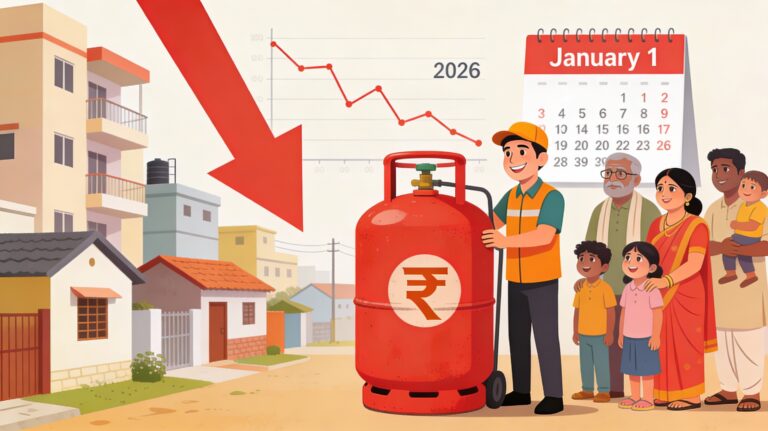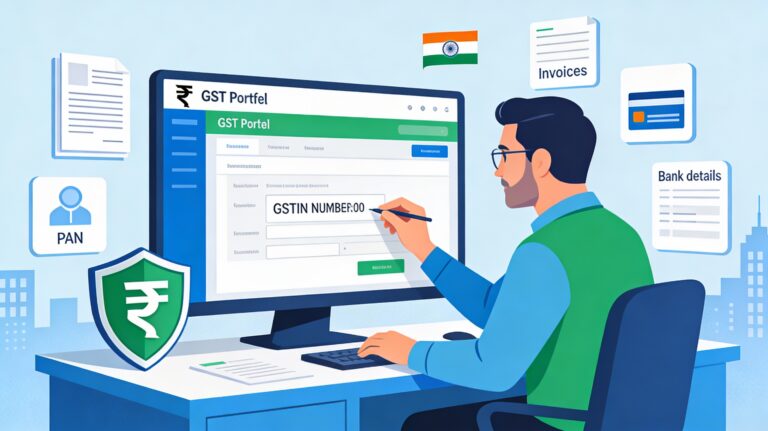
Rs 25 Lakh Gratuity Cap Clarification: Who Really Benefits and Why PSU Employees Feel Left Out
A shocking clarification has left millions of PSU, bank, and state employees stunned! The government’s new Rs 25 lakh gratuity cap applies only to central civil servants—leaving others excluded. What does this mean for your retirement benefits, and could another big update be on the horizon? Discover the hidden twist now!
The Big Twist Everyone’s Talking About
A few days ago, the central government quietly clarified something that has sent shockwaves across India’s public sector workforce. The buzz around a Rs 25 lakh gratuity ceiling had many employees—from public sector units (PSUs) to state government offices, banks, and the RBI—believing they were about to see a big boost to their retirement payout.But here’s the twist: the higher gratuity limit applies only to Central Government civil servants.
That single clarification has turned hopeful smiles into heated discussions, sparking worry, confusion, and debate on fairness. Let’s decode what this really means, who’s eligible, and what employees in PSUs, banks, and state governments need to know next.
What Exactly Is the Gratuity Cap and Why It Matters
To understand the significance, let’s rewind. Gratuity is a one-time retirement benefit paid to employees who have served at least five years with an organization. It’s not just another payout—it’s a reward for long-term service, loyalty, and dedication.Before 2018, the maximum gratuity payable under law was Rs 10 lakh. Then came the Payment of Gratuity (Amendment) Act, 2018, which increased the ceiling to Rs 20 lakh, aligning it with central government norms after the 7th Pay Commission.
Now, in 2025, the Department of Personnel and Training (DoPT) made headlines by revising the gratuity ceiling for Central Government civil servants to Rs 25 lakh. Initially, this news created massive excitement—especially among PSU and bank employees—many of whom assumed it would cover them too.
But after days of speculation and frantic online debates, the government issued a clear clarification:
“The revised Rs 25 lakh gratuity ceiling applies solely to Central Government civil employees. It does not extend to employees of PSUs, public sector banks, RBI, or state governments.”
A single line clarification, yet it has left lakhs of workers feeling betrayed.
The Power Shift: What This Means in Simple Terms
For Central Government civil servants, this is a welcome upgrade, directly boosting retirement benefits. But for employees of public sector undertakings and banks—many of whom operate under separate service rules—the message is clear: nothing changes.
Let’s break it down.
- Who gets Rs 25 lakh cap?
Group A, B, C central government civil servants (covering ministries and central departments). - Who doesn’t?
Employees of PSUs (like ONGC, BHEL, NTPC), state government staff, PSU bank employees, LIC, and RBI.
For them, the gratuity ceiling remains Rs 20 lakh.
The Emotional Undercurrent: Why PSU Workers Feel the Pinch
The reaction has been sharp and emotional. Many PSU employees, who have long viewed themselves as extensions of government service, now feel disconnected and undervalued. Social media platforms are buzzing with posts asking:
- “When we work for public interest, why this discrimination?”
- “Are PSU employees not serving the nation too?”
Unions and associations are already gearing up to demand a uniform gratuity structure across all public-sector entities, citing fairness and parity.
As one retired bank official put it:
“We contribute to the same economy, follow government rules, and serve till 60. Why is our loyalty capped lower?”
This sentiment captures the heart of the debate—a demand for equal financial respect in retirement.
The Legal and Structural Divide: Why the Clarification Was Necessary
Though painful for many, the clarification is legally consistent.
Here’s why:
Central Government civil servants fall directly under the DoPT and are governed by Central Civil Services (Pension) Rules.
However, PSU employees operate under different frameworks:
- PSUs follow their respective service regulations.
- Public sector banks follow the Banking Companies (Acquisition and Transfer of Undertakings) Acts and wage settlements.
- RBI and LIC have independent boards and approval mechanisms.
- State government staff abide by state laws or state-adopted versions of central rules.
So, even though all are part of the public ecosystem, their benefit structures are legally separate.
This is why a DoPT notification automatically applies only to central civil servants until the respective organizations adopt or announce it officially.
What PSU and Bank Employees Can Expect Next
The clarification doesn’t mean the door is closed forever. Historically, benefit revisions introduced for central employees often influence others:
- In 2018, when the gratuity ceiling was raised to Rs 20 lakh for central employees, banks, PSUs, and state governments eventually followed.
- Many organizations wait for official board or finance ministry approvals before revising.
So, here’s what’s likely next:
1. PSU Unions to Raise Demand:
Major trade unions like AIBOC, AIBEA, and others will likely push for parity in gratuity ceiling, citing the precedent of 2018.
2. Ministry-Level Review:
The Ministry of Labour and Employment, which administers the Payment of Gratuity Act, could review the higher cap for notification under the general law later this fiscal year.
3. Possible Extension in Future:
If the economy allows and inter-ministerial discussions align, the Rs 25 lakh cap may eventually be extended to PSU, bank, and state employees—though not automatically.
The Financial Reality Check
The difference between Rs 20 lakh and Rs 25 lakh might appear marginal to some, but the tax and take-home implications are big.
Suppose an employee retires with a calculated gratuity entitlement of Rs 28 lakh:
- Under the Rs 20 lakh cap, only Rs 20 lakh is tax-free.
- The remaining Rs 8 lakh becomes taxable.
With a Rs 25 lakh limit, only Rs 3 lakh would be taxable—a direct gain of Rs 5 lakh in tax-free retirement wealth.
For long-serving senior employees, especially in higher pay brackets, this change could mean lakhs in savings and a smoother post-retirement transition.
Voices from the Ground
Across India, this clarification has triggered a ripple of newsroom debates and workplace conversations.
- In bank branches, employees are recalculating gratuity projections.
- In PSU plants, HR departments are fielding daily queries.
- On Twitter, Reddit, and LinkedIn, hashtags like #GratuityParity and #Rs25LakhCap are trending among employee communities.
Many believe this also reflects a deeper shift—a gradual privatization tilt where PSUs are treated less like government entities and more like independent corporations.
The Historical Context: Gratuity Evolution in India
- 1972: The Payment of Gratuity Act came into force, ensuring a statutory right for employees to receive gratuity after five years of service.
- 2010: The ceiling was raised from Rs 3.5 lakh to Rs 10 lakh.
- 2018: The ceiling doubled to Rs 20 lakh.
- 2025: Central civil servants get Rs 25 lakh under government orders.
The trend is clear: gratuity caps in India have steadily increased with inflation, pay commission revisions, and living cost changes.
However, the speed and equality of implementation across sectors remain inconsistent.
The Bigger Picture: What This Says About India’s Pay and Benefit Landscape
This development reveals a subtle but growing divide between core government employment and public sector jobs.While both have historically been considered “safe government jobs,” the boundaries are widening in compensation, retirement benefits, and job security.Some experts believe this is part of a deliberate policy modernization, where PSUs are pushed toward performance-linked frameworks, while the core civil services retain traditional guarantees.
In other words, the future of “government-linked service” is diverging—and gratuity is just the latest proof.
Expert Views: What Economists and Policy Analysts Say
Dr. N.R. Sharma, a Delhi-based public finance researcher, notes:
“This clarification was inevitable. But the government should consider uniformity for morale and retention across public institutions. Fragmented benefit structures demotivate talent.”
Ananya Banerjee, a retired HR executive from a nationalized bank, adds:
“If the 2018 formula could be universally applied later, why deny this one now? Employees expect consistency, not uncertainty.”
Several policy commentators also warn that benefit differentiation could increase attrition among high-performing PSU employees, especially those with private-sector job offers.
Will the Payment of Gratuity Act Be Amended Again?
That’s the secret question everyone’s asking. The Payment of Gratuity Act, 1972, applies to both government and non-government establishments. However, its ceiling notification is revised only through central government gazette notifications.
So far, no new notification has been issued to amend the Rs 20 lakh general ceiling. Until that happens, private and PSU employees remain bound by the existing limit.
But here’s a smart insight: the very fact that the DoPT revised the central gratuity and announced it publicly could be a precursor to a nationwide amendment later this year—a step perhaps intended for the upcoming Union Budget 2026 discussions.
What Employees Should Do Right Now
If you’re working in a PSU, state government office, or PSU bank—don’t panic or assume ineligibility forever. Instead, focus on these immediate steps:
- Check your HR policy: Each PSU or bank may independently adopt the Rs 25 lakh limit later.
- Track official circulars: Watch for notifications from the Ministry of Finance or your organization’s HRD portal.
- Consult tax advisors: Understand how the ceiling affects your gratuity taxation.
- Plan retirement corpus smartly: Integrate pension, gratuity, and leave encashment to optimize post-retirement income.
Knowledge is power—staying updated helps avoid misinformation.
Key Takeaways
- The Rs 25 lakh gratuity ceiling applies only to central civil servants as of 2025.
- PSU, bank, RBI, LIC, and state government employees still have a Rs 20 lakh ceiling.
- This clarification was necessary because each institution operates under different rules.
- PSU and bank unions are likely to demand policy parity in coming months.
- The Payment of Gratuity Act may be amended later to align limits nationwide.
- Employees should stay informed and track HR circulars before making assumptions.
Final Thought
Retirement security is no longer just about years of service—it’s about how policy lines are drawn. The Rs 25 lakh gratuity clarification might seem like a simple administrative note today, but it hints at a larger transformation in how India defines “public service.”Will the government extend the same benefit to PSU and banking staff next? Or is this the first sign of a structural divide between bureaucracy and enterprise?Either way, one thing is clear: the gratuity debate of 2025 is far from over—and the next notification could change the financial future of millions of employees across India.






























